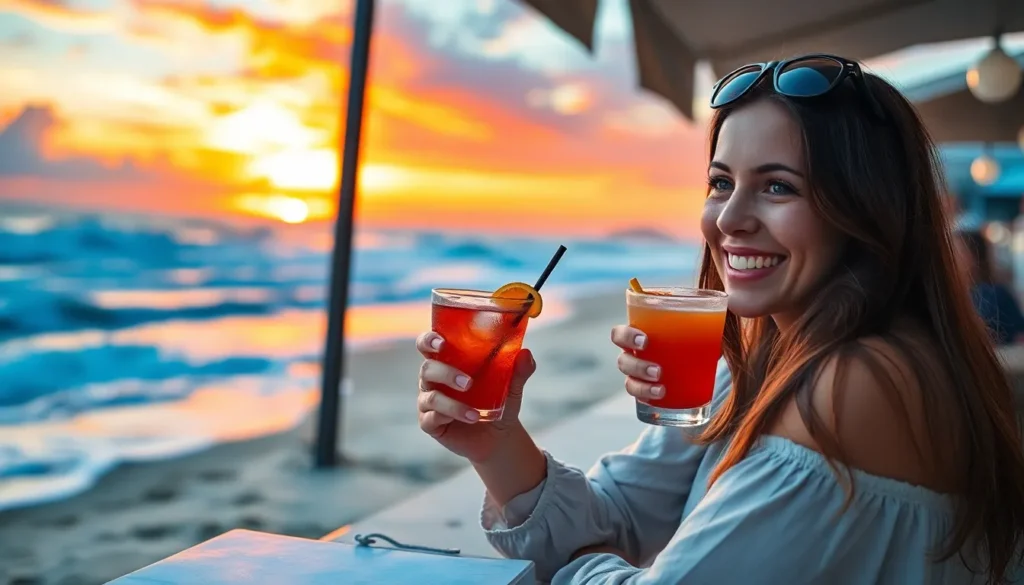Vacations offer a chance to escape the daily grind and create unforgettable memories. Each trip tells a unique story filled with adventure, discovery, and sometimes even a bit of chaos. From sun-soaked beaches to bustling city streets, these experiences shape who we are and how we see the world.
Sharing vacation stories allows people to connect over shared experiences and inspire others to explore new destinations. Whether it’s a hilarious mishap or a heartwarming moment, these tales capture the essence of travel and the joy it brings. Dive into the world of vacation stories and discover the magic that happens when wanderlust meets storytelling.
Table of Contents
ToggleOverview of Vacation Stories
Vacation stories serve as a rich tapestry weaving together diverse experiences from different travels. Each story embodies cultural encounters, unexpected mishaps, and unforgettable moments. From serene beaches to bustling cities, these narratives capture the essence of exploration.
Sharing these accounts enhances social bonds, enabling connections based on shared experiences and emotions. Individuals reflect on personal growth and insights gained while traveling, showcasing how adventures transform perspectives.
Common elements in vacation stories include:
- Locations: Unique destinations bring diverse experiences. Each place offers a different backdrop for adventures.
- Experiences: Memorable activities, such as hiking, dining, or cultural events, create the essence of each trip.
- Encounters: Interactions with locals often lead to enriching stories. Friendships formed during travels leave lasting impacts.
- Challenges: Overcoming obstacles adds depth to stories. Navigating language barriers or unexpected travel delays enhances the narrative.
Vacation stories reveal the intricacies of travel, providing inspiration for future adventures. They affirm the idea that every trip, regardless of its outcome, contributes to one’s journey and personal narrative.
Types of Vacation Stories

Vacation stories come in various forms, each capturing unique experiences that resonate with different audiences. These narratives can enhance connections among individuals and inspire new adventures.
Family Vacation Stories
Family vacation stories often highlight bonding moments and collective adventures. These tales share laughter, shared challenges, and lessons learned while traveling together. For instance, a trip to a theme park might include amusing interactions with characters and unexpected mishaps, strengthening family ties. Such stories often showcase the different dynamics between family members, from sibling rivalries to parents managing chaos, ultimately illustrating the value of quality time spent together.
Adventure Vacation Stories
Adventure vacation stories focus on thrill-seeking experiences and the allure of the unknown. These tales recount activities like hiking in national parks, scuba diving in coral reefs, or skydiving over stunning landscapes. They often emphasize overcoming obstacles or fears, providing a sense of achievement. For example, a mountain climbing narrative might include the physical challenges faced and the camaraderie developed with fellow climbers, showcasing the transformative power of adventure.
Romantic Vacation Stories
Romantic vacation stories capture intimate moments and new connections. These narratives often revolve around couples experiencing breathtaking sunsets, sharing quiet dinners on the beach, or exploring enchanting cities. They reflect the beauty of love and the magic of travel combined. For instance, a couple’s getaway to Venice may involve navigating through winding canals, forging deeper emotional bonds, and creating cherished memories that last a lifetime.
How to Capture Your Vacation Stories
Capturing vacation stories enhances the memories and shares experiences with others. Use organized methods to document events and emotions from each journey.
Writing Tips
- Keep a Travel Journal: A travel journal serves as an immediate outlet for thoughts, feelings, and observations during the trip. Write daily entries to record events and emotions.
- Use Descriptive Language: Engage readers with vivid descriptions of locations, people, and experiences. Employ sensory details to create a lively narrative.
- Focus on Key Experiences: Identify and elaborate on pivotal moments that stand out. Highlight interactions, challenges, or discoveries that shaped the trip.
- Be Honest and Authentic: Authenticity resonates with readers. Share both the highlights and the obstacles faced to portray a balanced view of the journey.
- Reflect on Personal Growth: Consider how the trip influenced personal perspectives or insights. Share lessons learned or changes in mindset derived from travel experiences.
Using Multimedia
- Incorporate Photos: Use photographs to supplement written narratives. Capture scenic vistas, candid moments, and cultural experiences to enhance storytelling.
- Create Video Clips: Short video clips provide dynamic perspectives on experiences. Consider using travel montages or candid moments that encapsulate the essence of the vacation.
- Utilize Infographics: Summarize main experiences or statistics in a visually engaging format. Infographics can highlight itineraries, places visited, or unique adventures encountered.
- Share on Social Media: Leverage social media platforms to share snippets of stories and visuals. Engaging posts encourage interaction and feedback from followers.
- Compile a Multimodal Presentation: Combine text, photos, and videos into a cohesive presentation. This approach offers an immersive experience for sharing stories with friends and family.
Sharing Your Vacation Stories
Sharing vacation stories creates bonds and inspires others to explore new destinations. Storytelling captures unique experiences, offering insight into diverse cultures and personal growth.
Key Elements to Include
- Descriptive Language: Use vivid details to transport readers to the place visited.
- Personal Challenges: Share hurdles encountered, highlighting resilience during travels.
- Cultural Encounters: Describe interactions with locals that shaped perspectives.
- Memorable Moments: Focus on specific events that left a lasting impression.
Ways to Share
- Travel Journals: Keep entries during travels for authentic reflections.
- Social Media: Share photos, anecdotes, and videos to engage wider audiences.
- Multimedia Presentations: Create infographics or slideshows to compile highlights.
- Group Sharing: Organize gatherings to recount stories with friends and family.
Authenticity Matters
Authentic narratives resonate more with audiences. Encourage sharing both successes and challenges faced during trips. This honesty fosters genuine connections and inspires further exploration.
By emphasizing compelling elements and utilizing varied sharing methods, vacation stories can engage and inspire many, revealing the joy and depth travel brings to life.
Vacation stories are more than just memories; they’re connections that enrich lives. Each narrative captures the essence of adventure and the beauty of human experience. By sharing these tales, individuals inspire others to embark on their own journeys, fostering a community of exploration and discovery.
The power of storytelling lies in its ability to bridge gaps between cultures and experiences. Whether through family bonding or thrilling escapades, every story adds to the collective tapestry of travel. As people reflect on their adventures, they not only celebrate their growth but also encourage others to seek out the extraordinary.
Ultimately, vacation stories remind everyone that travel is not just about the destination but the moments that shape us along the way.





